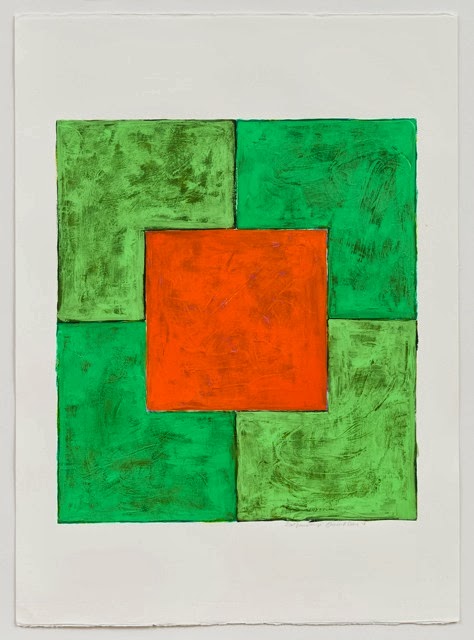13" x 9", acrylic and house paint on foam, 2013
What are you working on in your studio right now?
I am working on a new series on shaped foam. The goal is to see if I can treat the 'face' of a painting a little more three-dimensionally. On certain pieces, I try to incorporate the sides more, along with the different picture planes I create by shaping the foam. Sometimes I get lost in the painting process and this doesn't always happen. The paintings often stay in the realm of a 'traditional' front, sides etc. I am trying to eliminate that fact, as I said, by shaping the supports a little more. I am determined to see where this approach will take me.
Can you describe your working routine?
I am working on a new series on shaped foam. The goal is to see if I can treat the 'face' of a painting a little more three-dimensionally. On certain pieces, I try to incorporate the sides more, along with the different picture planes I create by shaping the foam. Sometimes I get lost in the painting process and this doesn't always happen. The paintings often stay in the realm of a 'traditional' front, sides etc. I am trying to eliminate that fact, as I said, by shaping the supports a little more. I am determined to see where this approach will take me.
Can you describe your working routine?
Mornings are tough. I am often taken over by distractions. As the day moves to afternoon is when I get started on painting for the day. I like to have a large block of time while working. I hope to have at least 3 days straight in which to work. I try and shut out the world and work.
Can you describe your studio space and how, if at all, that affects your work?
My studio is a total mess. I do manage to keep a smaller organized area where I paint, so I guess it has a balance. I have been painting on a table more recently, especially on the new smaller works. Some of my older works are off in the corner, I sometimes think about getting a dumpster to clean out the old work. I feel as if I am no longer ‘there’, like I’m done with those works. Hopefully that is a sign of growth as an artist.
18" x 11", acrylic and house paint on foam, 2013
My process sometimes begins with a small sketch of a shaped support I would like to work on. Other times it starts when I decide to pick up the hand saw and sculpt a shape out of the foam with no preconceived idea about an outcome.
In the process, I will occasionally take short breaks and that can really help things along. I will step away from the work and not look at it. I am not always sure of every ‘painting move’ to make next. These little breaks can bring new clarity on how to take the next step.
What are you having the most trouble resolving?
My issue with not cleaning my brushes.
Do you experiment with different materials a lot or do you prefer to work within certain parameters?
I am sort of sticking to the foam and acrylic and house paint at the moment. I am really impatient and can’t stand waiting for paint to dry. Though the pause of paint drying often helps with generating ideas and titles for paintings. I have worked with wood, paint and foam together in the past. Although, the two “works in progress” paintings I included, incorporate fabric, acrylic and house paint and foam.
in progress
Hopefully more and more of it. I am searching, in hopes of unlocking possibilities with these materials. I am a wanna-be builder of sorts and I plan on pushing the three-dimensional quality as the series progresses. We shall see.
Is there anything else you would like to add?
Thank you for the opportunity to share with you and your readers. I have to say that this was inspiring, thanks again!
13" x 12", acrylic and house paint on foam, 2013





.jpg)













